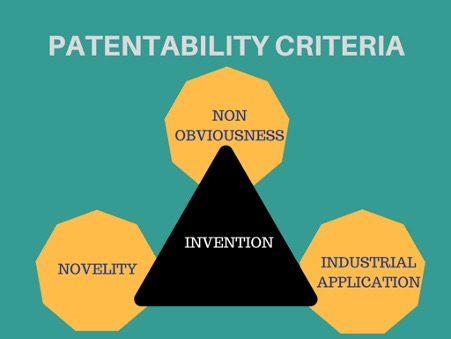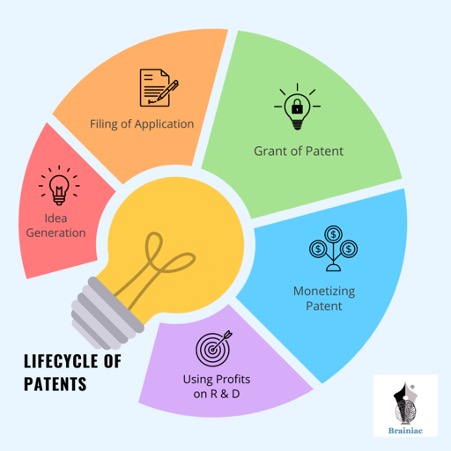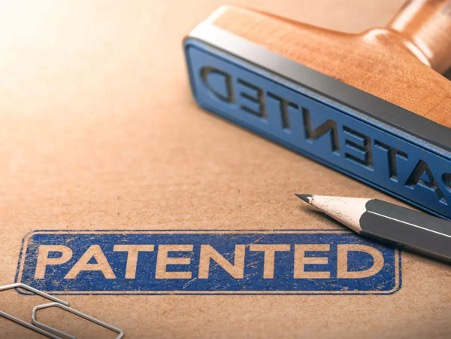The word patent comes from a Latin word “patent-em” which means open. A patent is basically a government issued document to the inventor of any new product in order to make a new product and sell it on the disclosure of the invention for a definite period of time. In other words a patent is an exclusive rights granted for an invention of a new product which is certified under the “Patents act 1970”. Under the act a patentee is considered to be the person whose name is registered as “ the grantee or proprietor of the patent”. The particular register is maintained by the government patent office located in four cities across different countries.
Talking about the origin of patent system I would like to make a mention of the person who first founded the resources in Alps and dictated property rights particularly for mining, timber and water in 1300s. As time passed and competition among men grew, the special privileges and protection were given to the useful creation or the creations that were worth the value of the human mind. Talking about the first patent provided formally was to a German person for the building of a model mill in 1409. In the United States, a patent was granted for a grain elevator ‘hopper boy’ to Oliver Evans. Meanwhile the French provided it careful observation and examination.

Talking about the Indian context, for the protection of invention of new products was mainly based on “British patent law of 1852”. During this period particular rights were provided to the inventors of manufacturers of new product mainly for a period of 14 years. In 1859 the act was modified and in 1872 the act was renamed as “The Patent and Designs Act” and in 1883 as “ The Protection Prevention Act” and in 1888 it was consolidated as “ The inventions and designs act” and in 1911 as “The Indian Patents and Designs Act”.
Moving forward we talk about the formation of the GATT and WIPO, after the World War II major economies such as American, Asian and the European economies was completely shattered. To deal with the loss three major bodies were developed i.e. World Bank, international monetary fund and international trade agreement. The major aim of these developed bodies was to revive the economy majorly the developing economy. It was the same time period when India signed the General agreements on tariffs and trade (GATT) which was designed to provide free international trade within the member countries by regulating and reducing tariffs on traded goods. It was formed to majorly facilitate the trade between the member countries. On January 1, 1948, 23 contracting states including India ratified GATT. We also see instances where the BIPRI was replaced with WIPO in 1967 in order to modernize and for better administration of the unions with respect to protection of intellectual property rights and creative and at the same time respecting the independence of the union.
Now moving ahead to answer the question as to why did India require the Patents Act 1970? Medicines required to cure the general public was not easily procured by India. The major source of these medicines was foreign countries and India imported a huge amount of medicines in order to meet the high demand of the public in India. Due to lack of indigenous medicines and huge demand of them, it led to high prices for the medicines. Drug prices in India were amongst the highest in the world. “Rajagopala Ayyangar” committee was appointed to revise the patent laws to comply in accordance with the industrial needs, and hence government vested the Patents Act in 1970 and this revolutionized the economic system of India by providing medicines at low prices. With provisions made in Patents Act 1970, the citizen in India got an opportunity to develop and this developing process lead to huge benefit and economic growth in India. Bulk manufacturers took this opportunity and build bulk medicines and sell at lower prices.

Some of the patents in the context of India that can be discussed are mentioned below:-
Issue of turmeric patent
East India is the home of the tropical herb turmeric. In India, turmeric powder finds extensive application as a medication, culinary additive, and coloring agent, among other purposes. In 1995, the University of Mississippi Medical Centre received a patent from the United States for the therapeutic properties of turmeric. It is now exclusively authorized to sell and distribute. The university was questioned by India’s Council of Scientific and Industrial Research two years later over the discovery’s originality. The patent was revoked by the USPTO for lack of originality.
Issue of Basmati rice patent
India’s most popular cereal, basmati rice, is renowned for its aromatic flavour. This rice has a fragrant flavour and is cultivated in the Basmati region of India. Although Indian farmers had been cultivating this rice for hundreds of years, a Texan corporation was granted a patent for a cross-breed that included American long-grain rice. Based on the firm’s scent, cooking elongation of the grain, and chalkiness, the US awarded the corporation a patent. From that point on, the company has the right to penalise farmers for growing rice and prevent them from sowing the seeds for the crop the next year. India became aware of this and submitted a petition to the US Patent and Trademark Office with supporting scientific data.
Issue of neem patent
The European Patent Office received the first patent application from W.R. Grace and the US Department of Agriculture. The technique described in the patent involves applying a neem oil formulation to the fungus to suppress it. India has filed a legal protest against the patent’s issuance. The data presented by the opponents showed that hydrophobic neem seed extracts had been known and used for millennia in India to protect agricultural plants from fungal infections and to treat dermatological problems in humans. Indian traditional wisdom is now available to the public. The patent was revoked by the EPO due to its lack of novelty, inventive step, and potential form of relevant previous art. Numerous more neem-related patents are pending in addition to this one.

Strong intellectual property rules are necessary, as demonstrated by the debate and awareness raised by the disputes surrounding basmati, neem, and turmeric. More legal changes in this field were made possible by the Uruguay Round’s 1994 conclusion. India also became a member of the World Trade Organisation and was required to abide by the Trade Related Aspects of Intellectual Property Rights (TRIPS). TRIPS gave India three years to comply with the duty by introducing a mailbox facility, exclusive marketing rights, and product patents.
Conclusion
Enactment of patent helps development of new inventions and ultimately leads to growth of technology and commerce in India. Patent Act 1970 helped and facilitated the inventors to protect and promote their products and inventions. This act helps and promotes new investors to come up with their invention and new ideas by providing them exclusive rights over their invention. If a person is willing to patent his or her invention, he or she has to go through a detailed procedure which has been laid down in the act.
Written by – Sneha Das
Edited by – Lucksh Mota
